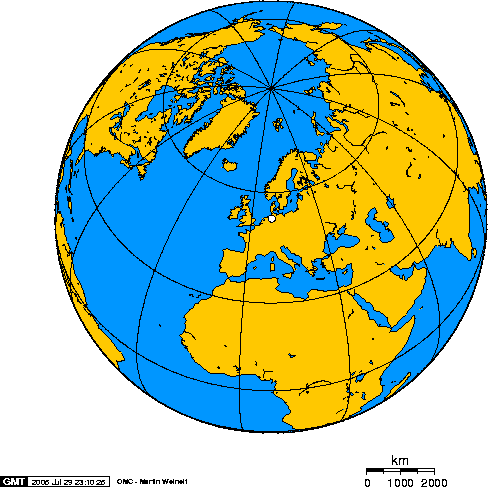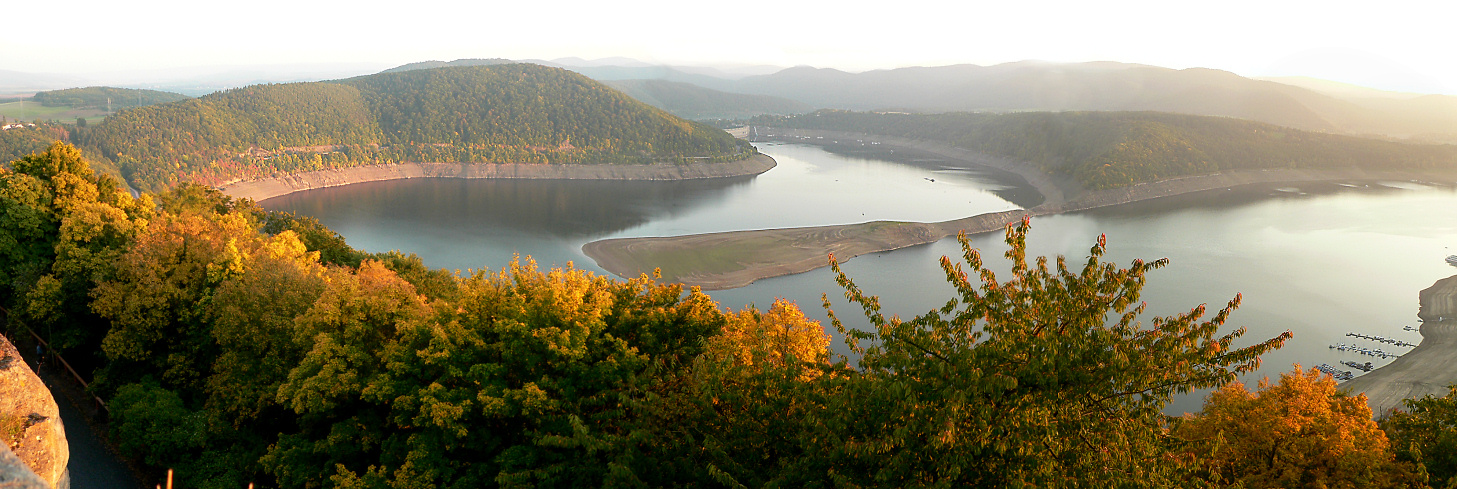|
Hemeln
Hemeln is an outlying village (''Ortsteil'') in the borough of the town of Hann. Münden. It lies on the right bank of the Weser River, 12 km from the city proper. The highways L561 and L560 run through the community. Its population of some 960 includes those of the two neighbouring villages, Glashütte (100 residents) and Bursfelde (40). As of 2009, the village mayor is Alfred Urhahn. Hemeln has numerous social and service organizations, a kindergarten and a grammar school. There are a few inns for food and lodging. Since the village is not too far from Goettingen, it is a popular outing place for the university's students. The earliest known name reference to Hemeln is in 834, the year in which Frankish emperor Ludwig ceded Hemeln to the Corvey Abbey. In 1342 Hemeln was severely flooded, and again in May 1943, this time due to RAF bombing and destruction of the Edersee dam. The village church was built in 1681 as a replacement for a smaller one dating to 1175 and dest ... [...More Info...] [...Related Items...] OR: [Wikipedia] [Google] [Baidu] |
Veckerhagen Ferry
The Veckerhagen Ferry is a cable ferry across the Weser River in Germany. The ferry crosses between Veckerhagen, in Hesse, and Hemeln, in Lower Saxony. The crossing is located some north of Kassel. The ferry takes automotive, bicycle and foot passengers. Technically, the ferry is a reaction ferry, which is propelled by the current of the water. An overhead cable Cable may refer to: Mechanical * Nautical cable, an assembly of three or more ropes woven against the weave of the ropes, rendering it virtually waterproof * Wire rope, a type of rope that consists of several strands of metal wire laid into a hel ... is suspended from towers anchored on either bank of the river. The ferry is attached to this overhead cable by bridle cables and pulleys. To operate the ferry, it is angled into the current, causing the force of the current to move the ferry across the river. References Cable ferries in Germany Transport in Hesse {{LowerSaxony-geo-stub ... [...More Info...] [...Related Items...] OR: [Wikipedia] [Google] [Baidu] |
Hann
Hann may refer to: People * Adam Hann-Byrd (born 1982), American actor * Allie Hann-McCurdy (born 1987), Canadian ice dancer * Chris Hann (born 1953), British social anthropologist * David Hann (born 1952), American politician * Della Hann, American psychologist and research administrator * Dorothy Hann, American beauty queen * Frank Hann (1846–1921), Australian explorer * Georg Hann (1897–1950), Austrian operatic bass-baritone * Jason Hann, American percussionist * Judith Hann (born 1942), English broadcaster and writer specialising in science * Julius von Hann (1839–1921), Austrian meteorologist * Les Hann (1911–1988), English footballer * Marjorie Hann (1916–2011), South Australian painter and art teacher * Matthew Hann (born 1980), English footballer * Ng Tian Hann (born 1969), Malaysian Chinese movie director * Quinten Hann (born 1977), Australian snooker player * William Hann (1837–1889), Australian explorer and cattleman * Wong Choong Hann (born 1977 ... [...More Info...] [...Related Items...] OR: [Wikipedia] [Google] [Baidu] |
Weser
The Weser () is a river of Lower Saxony in north-west Germany. It begins at Hannoversch Münden through the confluence of the Werra and Fulda. It passes through the Hanseatic city of Bremen. Its mouth is further north against the ports of Bremerhaven and Nordenham. The latter is on the Butjadingen Peninsula. It then merges into the North Sea The North Sea lies between Great Britain, Denmark, Norway, Germany, the Netherlands, Belgium, and France. A sea on the European continental shelf, it connects to the Atlantic Ocean through the English Channel in the south and the Norwegian Se ... via two highly Saline water, saline, Estuary, estuarine mouths. It connects to the canal network running east–west across the North German Plain. The river, when combined with the Werra (a dialectal form of ''Weser''), is long and thus, the longest river entirely situated within Germany (the Main (river), Main, however, is the longest if the Weser-Werra are considered separate). ... [...More Info...] [...Related Items...] OR: [Wikipedia] [Google] [Baidu] |
Louis The Pious
Louis the Pious (; ; ; 16 April 778 – 20 June 840), also called the Fair and the Debonaire, was King of the Franks and Holy Roman Emperor, co-emperor with his father, Charlemagne, from 813. He was also King of Aquitaine from 781. As the only surviving son of Charlemagne and Hildegard (queen), Hildegard, he became the sole ruler of the Franks after his father's death in 814, a position that he held until his death except from November 833 to March 834, when he was deposed. During his reign in Aquitaine, Louis was charged with the defence of the empire's southwestern frontier. He Siege of Barcelona (801), conquered Barcelona from the Emirate of Córdoba in 801 and asserted Frankish authority over Pamplona and the Basques south of the Pyrenees in 812. As emperor, he included his adult sons, Lothair I, Lothair, Pepin I of Aquitaine, Pepin and Louis the German, Louis, in the government and sought to establish a suitable division of the realm among them. The first decade of his reig ... [...More Info...] [...Related Items...] OR: [Wikipedia] [Google] [Baidu] |
Corvey Abbey
The Princely Abbey of Corvey ( or ) is a former Benedictine abbey and ecclesiastical principality now in North Rhine-Westphalia, Germany. It was one of the half-dozen self-ruling '' princely abbeys'' of the Holy Roman Empire from the Late Middle Ages until 1792 when Corvey was elevated to a prince-bishopric. Corvey, whose territory extended over a vast area, was in turn secularized in 1803 in the course of the German mediatisation and absorbed into the newly created Principality of Nassau-Orange-Fulda. Originally built in 822 and 885 and remodeled in the Baroque period, the abbey is an exceptional example of Carolingian architecture, the oldest surviving example of a westwork, and the oldest standing medieval structure in Westphalia. The original architecture of the abbey, with its vaulted hall and galleries encircling the main room, heavily influenced later western Romanesque and Gothic architecture. The inside of the westwork contains the only known wall paintings of ancie ... [...More Info...] [...Related Items...] OR: [Wikipedia] [Google] [Baidu] |
Edersee
The Edersee, also known as the Ederstausee, is an reservoir in Waldeck-Frankenberg, Hesse, Germany holding back an estimated . It has the second-largest area (behind the Forggensee), and the third-largest volume (behind the Bleilochstausee and Rurstausee), of all reservoirs in Germany. It is on the chief western tributary of the Fulda, the Eder, behind the Edersee Dam near the town of Waldeck in the Waldeck-Frankenberg district of North Hesse. The dam and reservoir are owned by the Federal Waterways and Shipping Administration, whose Hann. Münden Waterways and Shipping office is locally responsible. The primary purpose is provision of water for the federal waterways, the Oberweser and Mittellandkanal. The dam also protects downstream residents from small and medium floods, generates electrical energy and the lake is used for sports and leisure. Setting Being in the Naturpark Kellerwald-Edersee and the Nationalpark Kellerwald-Edersee and overlooked by Waldeck Castle, ... [...More Info...] [...Related Items...] OR: [Wikipedia] [Google] [Baidu] |
Thirty Years' War
The Thirty Years' War, fought primarily in Central Europe between 1618 and 1648, was one of the most destructive conflicts in History of Europe, European history. An estimated 4.5 to 8 million soldiers and civilians died from battle, famine, or disease, while parts of Germany reported population declines of over 50%. Related conflicts include the Eighty Years' War, the War of the Mantuan Succession, the Franco-Spanish War (1635–1659), Franco-Spanish War, the Torstenson War, the Dutch-Portuguese War, and the Portuguese Restoration War. The war had its origins in the 16th-century Reformation, which led to religious conflict within the Holy Roman Empire. The 1555 Peace of Augsburg attempted to resolve this by dividing the Empire into Catholic and Lutheran states, but the settlement was destabilised by the subsequent expansion of Protestantism beyond these boundaries. Combined with differences over the limits of imperial authority, religion was thus an important factor in star ... [...More Info...] [...Related Items...] OR: [Wikipedia] [Google] [Baidu] |
Bursfelde Abbey
Bursfelde Abbey (in German Kloster Bursfelde) is a former Benedictine monastery located in Bursfelde, a hamlet which for administrative purposes is included in the municipality of nearby Hannoversch Münden in Lower Saxony, Germany. Today the abbey church and its estate cover a site of approximately 300 hectares which is administered by the Klosterkammer Hannover, a body that operates under the auspices of the to look after reassigned or disused ecclesiastical buildings and other heritage properties in the region. The legal owner of the Bursfelde Monastery Complex (''"Zentrums Kloster Bursfelde"'') is the Evangelical-Lutheran Church of Hanover. History The abbey was founded in 1093 by Count Heinrich the Fat of Northeim and his wife Gertrude so that the members of noble families from the area might be buried in a place with monks permanently in attendance. Archbishop Ruthard of Mainz participated in the foundation. The first monks came from Corvey Abbey: a close as ... [...More Info...] [...Related Items...] OR: [Wikipedia] [Google] [Baidu] |
Veckerhagen
Reinhardshagen is a municipality in the district of Kassel, in Hesse, Germany. It is located 24 kilometers north of Kassel, and 21 kilometers west of Göttingen Göttingen (, ; ; ) is a college town, university city in Lower Saxony, central Germany, the Capital (political), capital of Göttingen (district), the eponymous district. The River Leine runs through it. According to the 2022 German census, t .... References External links * Kassel (district) Reinhardswald {{Hesse-geo-stub ... [...More Info...] [...Related Items...] OR: [Wikipedia] [Google] [Baidu] |
Hesse
Hesse or Hessen ( ), officially the State of Hesse (), is a States of Germany, state in Germany. Its capital city is Wiesbaden, and the largest urban area is Frankfurt, which is also the country's principal financial centre. Two other major historic cities are Darmstadt and Kassel. With an area of 21,114.73 square kilometers and a population of over six million, it ranks seventh and fifth, respectively, among the sixteen German states. Frankfurt Rhine-Main, Germany's second-largest metropolitan area (after Rhine-Ruhr), is mainly located in Hesse. As a cultural region, Hesse also includes the area known as Rhenish Hesse (Rheinhessen) in the neighboring state of Rhineland-Palatinate. Etymology The German name , like the names of other German regions ( "Swabia", "Franconia", "Bavaria", "Saxony"), derives from the dative plural form of the name of the inhabitants or German tribes, eponymous tribe, the Hessians (, singular ). The geographical name represents a short equivalent o ... [...More Info...] [...Related Items...] OR: [Wikipedia] [Google] [Baidu] |
Villages In Lower Saxony
A village is a human settlement or Residential community, community, larger than a hamlet (place), hamlet but smaller than a town with a population typically ranging from a few hundred to a few thousand. Although villages are often located in rural areas, the term urban village is also applied to certain urban neighborhoods. Villages are normally permanent, with fixed dwellings; however, transient villages can occur. Further, the dwellings of a village are fairly close to one another, not scattered broadly over the landscape, as a dispersed settlement. In the past, villages were a usual form of community for societies that practice subsistence agriculture and also for some non-agricultural societies. In Great Britain, a hamlet earned the right to be called a village when it built a Church (building), church. [...More Info...] [...Related Items...] OR: [Wikipedia] [Google] [Baidu] |





